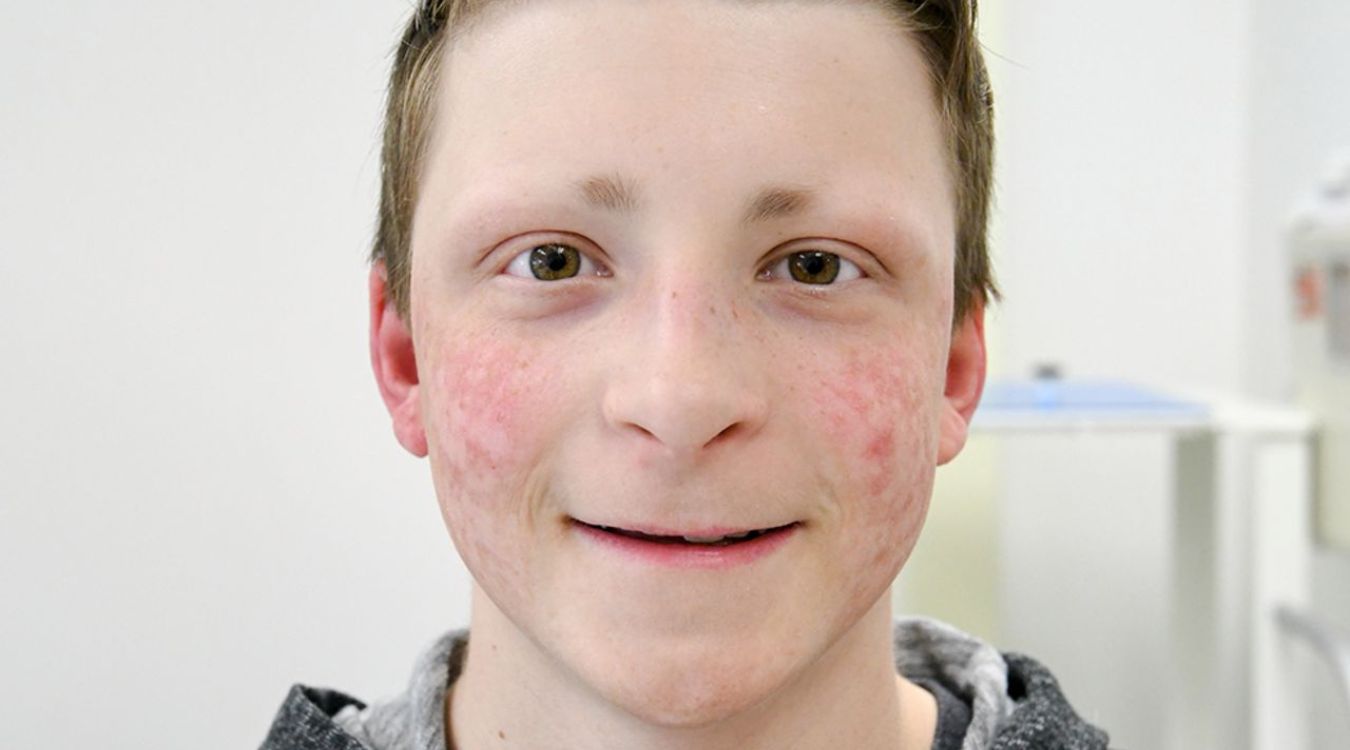
Poikiloderma of Rothmund–Thomson is a rare genetic disorder that affects the skin, eyes, and bones. This condition usually appears in infancy or early childhood, leading to a variety of symptoms that can be both puzzling and challenging. Characterized by skin changes, including redness, atrophy, and pigmentation, it often leaves parents and caregivers searching for answers. Beyond the skin, individuals may experience cataracts, skeletal abnormalities, and an increased risk of certain cancers. Understanding this condition is crucial for early diagnosis and management. In this blog post, we'll explore 25 intriguing facts about Poikiloderma of Rothmund–Thomson, shedding light on its causes, symptoms, and treatments.
Key Takeaways:
- Poikiloderma of Rothmund–Thomson is a rare genetic disorder affecting the skin, bones, and other body parts. It can cause skin changes, hair and nail abnormalities, and an increased risk of cancer.
- Managing RTS involves regular skin care, monitoring for cancer, orthopedic and eye care, and genetic counseling. Support groups, education plans, and physical therapy can help patients lead fulfilling lives.
What is Poikiloderma of Rothmund–Thomson?
Poikiloderma of Rothmund–Thomson, also known as Rothmund-Thomson Syndrome (RTS), is a rare genetic disorder. This condition affects the skin, bones, and other parts of the body. Let's dive into some fascinating facts about this unique syndrome.
-
RTS was first described in 1868 by August von Rothmund, a German ophthalmologist. He noticed a pattern of skin changes in young patients.
-
The syndrome is named after two doctors: Rothmund and Matthew Thompson, who further studied the condition in 1936.
-
RTS is caused by mutations in two genes: RECQL4 and ANAPC1. These genes play a role in DNA repair and cell division.
-
There are two types of RTS: Type 1 and Type 2. Type 1 is linked to RECQL4 mutations, while Type 2 is associated with ANAPC1 mutations.
-
The condition is inherited in an autosomal recessive manner. This means both parents must carry a copy of the mutated gene for their child to be affected.
Symptoms and Diagnosis
RTS presents with a variety of symptoms that can make diagnosis challenging. Here are some key facts about the symptoms and how doctors diagnose the condition.
-
Poikiloderma is a hallmark symptom. This refers to a pattern of skin changes, including redness, pigmentation, and thinning.
-
Patients often develop poikiloderma in infancy. The skin changes typically start on the face and spread to other parts of the body.
-
RTS can cause sparse hair. Many patients have thin, brittle hair, and some may experience hair loss.
-
Nail abnormalities are common. Patients may have ridged, thin, or absent nails.
-
Bone abnormalities are a significant feature. These can include short stature, radial ray defects, and osteopenia.
-
Cataracts can develop in childhood. This eye condition causes clouding of the lens, leading to vision problems.
-
Patients may have an increased risk of cancer. Osteosarcoma, a type of bone cancer, is particularly common in RTS patients.
-
Diagnosis often involves genetic testing. Identifying mutations in the RECQL4 or ANAPC1 genes can confirm the diagnosis.
Treatment and Management
Managing RTS requires a multidisciplinary approach. Here are some important facts about treatment and care for patients with this condition.
-
There is no cure for RTS. Treatment focuses on managing symptoms and preventing complications.
-
Regular skin care is essential. Patients should use sunscreen and moisturizers to protect their skin.
-
Monitoring for cancer is crucial. Regular screenings can help detect cancers early, improving the chances of successful treatment.
-
Orthopedic care may be needed. Bone abnormalities can require surgical intervention or physical therapy.
-
Eye care is important. Regular eye exams can help manage cataracts and other vision issues.
-
Genetic counseling can be beneficial. Families may find it helpful to understand the inheritance pattern and risks for future children.
Living with RTS
Living with RTS can be challenging, but many patients lead fulfilling lives. Here are some facts about the daily life and support available for those with RTS.
-
Support groups can provide valuable resources. Connecting with others who have RTS can offer emotional support and practical advice.
-
Education plans may be needed. Some children with RTS may require special education services to address learning difficulties.
-
Physical therapy can improve mobility. Regular exercise and therapy can help maintain muscle strength and joint function.
-
Patients should avoid excessive sun exposure. Protecting the skin from UV rays can prevent further damage.
-
A balanced diet is important. Proper nutrition supports overall health and can help manage some symptoms.
-
Advances in research offer hope. Ongoing studies aim to better understand RTS and develop new treatments.
Understanding Poikiloderma of Rothmund–Thomson
Poikiloderma of Rothmund–Thomson is a rare genetic disorder that affects the skin, bones, and other tissues. Knowing the symptoms like skin atrophy, pigmentation changes, and telangiectasia can help in early diagnosis. Genetic testing confirms the condition, which is often linked to mutations in the RECQL4 gene. While there's no cure, treatments focus on managing symptoms and preventing complications. Sunscreen, regular skin checks, and a balanced diet are crucial. Awareness can lead to better support and resources for those affected. If you or someone you know shows signs, consult a healthcare provider for advice. Understanding this condition can make a big difference in the quality of life for those living with it.
Frequently Asked Questions
Was this page helpful?
Our commitment to delivering trustworthy and engaging content is at the heart of what we do. Each fact on our site is contributed by real users like you, bringing a wealth of diverse insights and information. To ensure the highest standards of accuracy and reliability, our dedicated editors meticulously review each submission. This process guarantees that the facts we share are not only fascinating but also credible. Trust in our commitment to quality and authenticity as you explore and learn with us.
